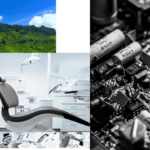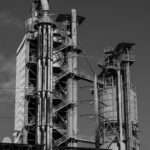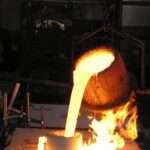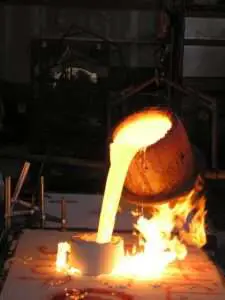
Tata Steel Ltd. Stock Analysis(2024-25)
In this article we will try to analyze Tata Steel Ltd. based on previous six years of financial statements viz Balance sheet, Profit and Loss statement and Cash flow statement. With this fundamental analysis we will try to gain insight into the business activities, financial health, operating efficiency and profitability of the company and finally try to derive the intrinsic value of the stock using Discounted Cash Flow method and the price at which the stock becomes attractive for long term investment. This article is divided in three sections as listed below :-
Section 1: Qualitative Fundamental Analysis comprising of General Introduction, Business overview dwelling into Business Model, Strengths and Weakness, Long Term Sustainability and finally the competitors.
Section 2:Quantitative Fundamental Analysis on Financial Health, Operating Efficiency And Profitability.
Section 3: Calculation Of Intrinsic Value.
General Introduction
Dated: 07 Mar 25
Company: Tata Steel Ltd.
CMP: Rs. 150.35
Market Capitalisation: Rs. 1,87,688.56 Cr.
Share Holding Pattern:

Promoters: Tata Sons
Peers: JSW Steel, Jindal Steel, tube Investments, SAIL
Fundamental Analysis Of Tata Steel Ltd.
General Introduction:
Tata Steel Ltd. is one of the pioneers in the field of steel manufacturing in India. The company was earlier known as Tata Iron & Steel Company(TISCO). TISCO was established as a pig iron producer in 1907, TISCO was rechristened as Tata Steel Ltd. in 2005. It is one of the largest steel producers in the world. It is one of the most geographically spread out companies in the world with operations and commercial presence in numerous locations worldwide. The company operates in 25+ countries and has its key operations located in India, United Kingdom and Netherlands. In 2007 it acquired steelmaker Corus in Europe that propelled it to one of the largest steelmakers in the world.
Business Overview:
The company has presence in over 50 countries and has manufacturing facilities in 26 countries. Such a vast geographic spread gives it the immunity against regional geopolitical scenarios that may otherwise have adverse impact on its production and sales operations. The company primarily serves customers in automotive, consumer goods, engineering, packaging, lifting & excavating, energy & power, aerospace, shipbuilding, rail and defence sectors.
One of the greatest advantages the company has is that it is one of the few companies in India to have captive iron ore mines allowing it to mitigate the volatility in iron ore prices. The company has strong presence at all levels of steel value chain starting from iron ore mining to downstream products helping it to achieve a higher profitability.
The company is committed to responsible growth with a decarbonization roadmap to future. For achieving its goals the company is implementing mechanisms to utilize waste heat, capture CO2, incorporating green electricity in arc furnaces etc. The company intends to achieve net zero emissions by 2045. Many of these are already in operation and helps the company in mitigating the impact of carbon tax on steel production imposed by the European Union. Over 90% of the company’s steel production in India is from ResponsibleSteel™ certified sites.
In India, the company operates in Jamshedpur and Gamharia in Jharkhand as well as in Kalinganagar in Odisha. Additionally, the Company has downstream manufacturing facilities for wires, tubes, bearings, agricultural equipment, pig iron, ductile iron (DI) pipes, and various industrial by-products. The Company’s operations also include Tata Growth Shop, a heavy-duty engineering and fabrication business, along with a Ferro Alloys and Minerals Division.
In the UK the company is in the process of phasing out coal fire blast furnaces and other associated auxiliaries as these are nearing end of life and are operationally unstable and financially unsustainable. The company has reached an agreement with UK Government to jointly invest £1.25 billion to fund a new electric arc furnace to ensure future continuity of steel making in UK. The project will reduce direct emissions of CO₂ from the steel works by 50 MT over 10 years and utilise locally available scrap in the UK.
In Netherlands the company is in discussions with the Dutch government for a financial and policy-level support on a decarbonisation plan to replace one of the two blast furnaces with a Direct Reduced Iron (DRI) plant and an EAF before 2030. In addition to Europe, the company also operates three green steel production facilities in Thailand for the production of long products including rebars and wire rods across South Asia.
Other input material that is vital to steel production is coal. Though India has huge reserves of coal, the type of coal used for steel production known as coking coal is not abundantly available within the country and has to be imported mainly from Australia. Of late, coking coal supply from Australia has been facing disruptions because of adverse climatic conditions, unplanned maintenance and logistic issues. With technologies like Hydrogen and bio-char injected blast furnace and increasing steel scrap usage in the production process this dependence on coal is being reduced in a staged manner.
India’s rising income levels supporting automotive sector, government’s infrastructure push along with reforms directed towards ease of doing business, Atmanirbhar Bharat Abhiyaan focused on manufacturing, Production Linked Incentive schemes and increased activity in real estate sector spurred by rapid urbanization will definitely work in the company’s favour as it serves all these major sectors remains committed to facing these enormous opportunities. The company is working towards doubling its capacity to 40MTPA by 2030, boosting domestic steel industry while creating direct and indirect employment opportunities and empowering local communities.
In short term the company will face the heat of monetary tightening cycles locally and internationally which will have direct impact on two of the major sectors viz automobile and real estate. In addition, slowdown in domestic consumption of steel in China has lead to increased exports from China causing softening of steel prices in the international markets.
Growth in demand combined with substantial raw material reserves and an extensive pool of competent manpower provide structural advantages for the steel sector. Tata Steel is well positioned in the sector to take advantage of these factors. The Services & Solutions business of the company has the objective of deepening of understanding end-consumers and customer decision journey. The Company has diversified its Services & Solutions portfolio to include reinforcement solutions, fencing & binding solutions, structural solutions, doors & windows and modular housing. In addition to these, it is also looking to introduce non-steel materials like composites, fibre-reinforced polymers, graphene and medical materials also.
The revenue break-up of the company on the basis of major businesses:
| 2024 | 2022 | 2020 | |
| Steel | 94.94% | 93.45% | 91.98% |
| Power & Water | 0.88% | 0.71% | 1.21% |
| Others | 4.19% | 5.84% | 6.81% |
The revenue break up of the company on the basis of geographical regions:
| 2024 | 2022 | 2020 | |
| India | 58.24% | 49.41% | 51.19% |
| Outside India | 41.76% | 50.59% | 48.81% |
Though there may be some hiccups in the short term because of the drop in production in the European units because of ongoing transition to carbon free production processes and replacement of production units that have reached end of life and volatility in raw material prices due to global geopolitical scenario, in the long run the company is bound to benefit from its investment in adoption of new technologies in steel production and its foresight to extend its business to reach, understand and meet the requirements of the end customers.
****************************************************
Financial Ratios
Leverage Ratios

Observations:
- The company has managed to bring down its debt during this period. In absolute terms the debt has increased by 13.36% during the period whereas the shareholder’s Equity has increased by 134%.
Operating Ratios

Observations:
- There were two instances when the current liabilities exceeded the current assets as seen from the working capital ratio. It is considered better if a company has sufficient current assets to cover its current liabilities else it may face situations where it has to rely on external debt to meet short term working capital requirements.
- Receivable turnover has improved during the period.
Profitability Ratios

Observations:
- The company has managed to almost double its Profits during this period while maintaining its margins.
- During the period it has an average ROCE of 9.09%, however, at current Enterprise Valuation, for a new investor ROCE works out to be lesser than long term Government of India Bond Coupons.
****************************************************
To learn Fundamental Analysis and
Company Intrinsic Valuation
Visit
Intrinsic Analyst – Learning Center.
Also Check out Testimonials of people who joined us in this Investment Journey!!!
****************************************************
Author
Jibu Dharmapalan
SEBI Registered Research Analyst
Registration No. INH000014678
GSTIN: 32AHVPD3247L2Z3
Mobile: +91 9656125475
Click Here To Contact on – Whatsapp or Telegram
Check Intermediary on SEBI Website
If You Like This Content 👇👇👇
Click Here To Join Us on Facebook For Free Live Interactive Discussion And Learning
References:
BSE India – Tata Steel Annual Reports
Click Here for Home
FAQs
What is Intrinsic Value?
Ans: When someone invests in an asset, he does so in order to earn money from the business. The investor gets paid over a period of time as long as he is invested in the asset. Now intrinsic value is the present value of all such future cash flows generated by the asset. So logically one should not invest in any asset if the ask price is more than the intrinsic value of the asset.
How is Intrinsic Value of a company calculated?
Ans: For calculating the intrinsic value of a company all its future cash flows are extrapolated based on the past performance of the company, assumptions about the future growth of the company and its terminal value. Once all these are calculated these are brought to the present date based on appropriate discounting rate. The sum of all these gives the intrinsic value of the company. It may be more or less than the market capitalization of the company. If it is more than the market capitalization of the company then the company is said to be undervalued and is a good bet as a long-term investment and vice versa.
How is Intrinsic Value of a share calculated?
Ans: Once intrinsic value of a company is calculated as explained above, it is divided by the total number of outstanding shares of the company. This gives the intrinsic value of a share.
What is Discounted Cash Flow?
Ans: When we have cash flows that are spread over a period of time then Discounted Cash Flow method is used to calculate present value of all such cash flows. The present value depends on the discounting rate used. Usually 10 year Government bond yield rate(risk free rate of return) is used as the discounting rate.
















